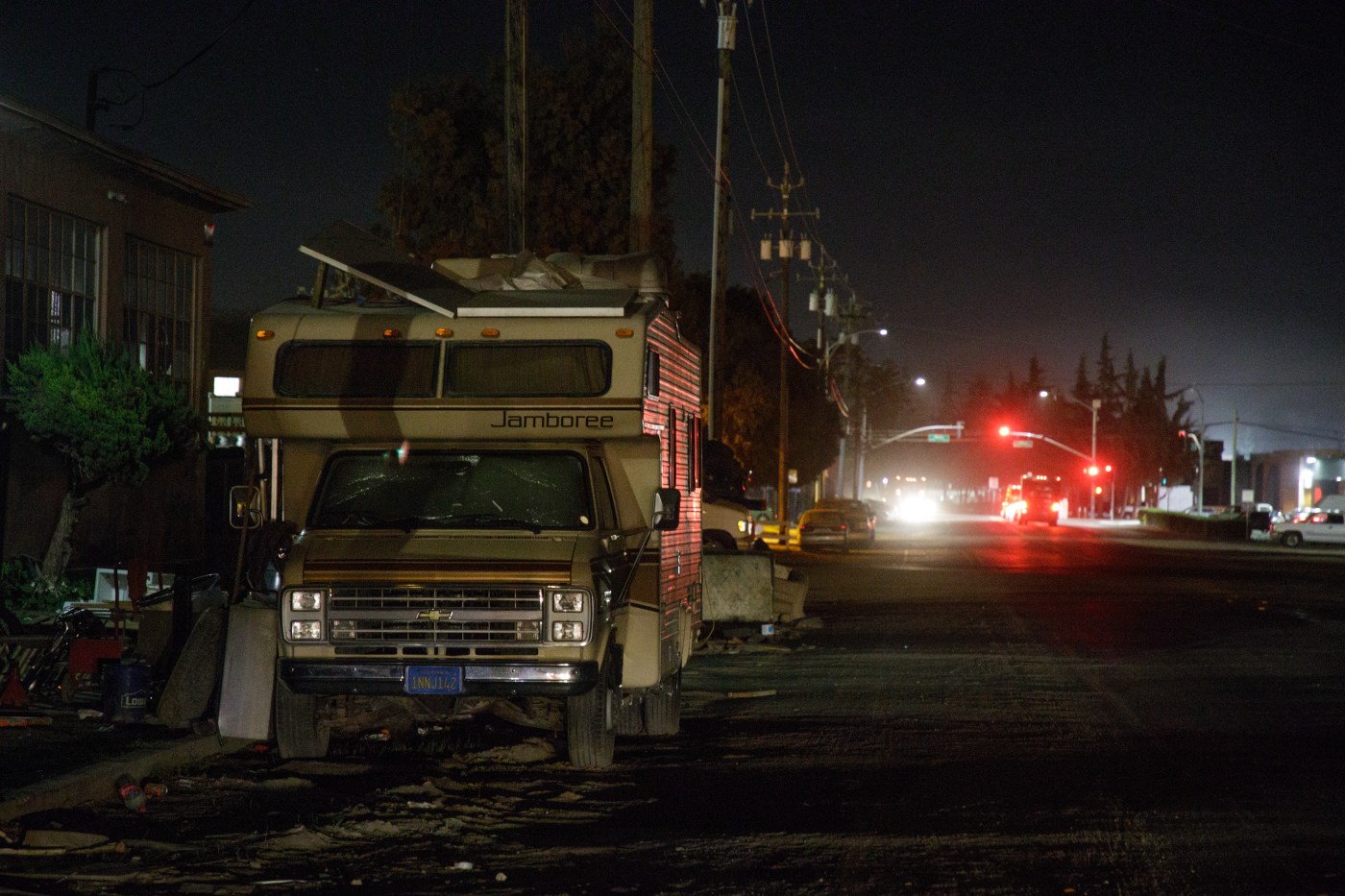In San Jose’s latest move to regulate its homeless population, city leaders this week passed two new laws that will ban encampments near school zones and create new limits on where RVs and lived-in vehicles can park.
Officials said the new laws are needed to make students and families feel safer on city streets, which are also home to the city’s 4,411 unsheltered residents.
“We have to do a better job of managing the safety on our roads, particularly for our children,” Mayor Matt Mahan said at a recent City Council meeting. He said he received letters from a dozen students describing the difficulties they had getting to school because of nearby encampments.
The first law will give the council the power to create “no overnight parking” zones, in which police and other city workers have the power to tow large vehicles. The second bans encampments within 150 feet of K-12 schools around the city. The laws will be enforced starting in May.
Homeless advocates are concerned such laws could pave the way for broader restrictions on where people living on the streets can go. In March, Mahan announced a plan to clear 1,000 homeless people from along the city’s creeks and rivers over the next year.
Related Articles
Backers of California homeless camp ban cite ‘successful’ San Diego law. But is it?
Former Oakland encampment residents commemorate year anniversary of sweeps
Letters: A bad start | Developers’ benefit | Support disabled | Cleanup detail | Travesty of justice | Not self-defense
Antioch clears out another unhoused encampment
Report: State hasn’t been tracking homeless programs’ effectiveness
“What some view as a nuisance or burden, others view as a home and the only thing keeping them sheltered,” said Ashley Rosen, a homeless advocate, during the meeting. “Tell them where they can go, not where they can’t.” The city doesn’t have enough shelter beds to accommodate all of its unsheltered population.
Mahan reiterated the city’s commitment to building more safe-parking sites and interim housing for the homeless.
“Our primary strategy for addressing lived-in vehicles and un=managed encampments is to create safe, managed places where people can go,” he said. The city already has three interim housing sites, and four others in the pipeline, including a safe parking site at Berryessa and the expansion of a tiny home site at Rue Ferrari. So far, the city’s interim housing sites have served 1,500 people.
The bill is similar to a law that Los Angeles passed in 2022 that banned encampments within 500 feet of schools and daycares. A bill proposed in the California State Legislature seeks to pass a similar ban statewide. Introduced by Senate Minority Leader Brian Jones, a Republican from Santee, the legislation would be even more expansive, banning encampments within 500 feet of schools, open spaces and transit stops. The bill is set for a hearing next week.












